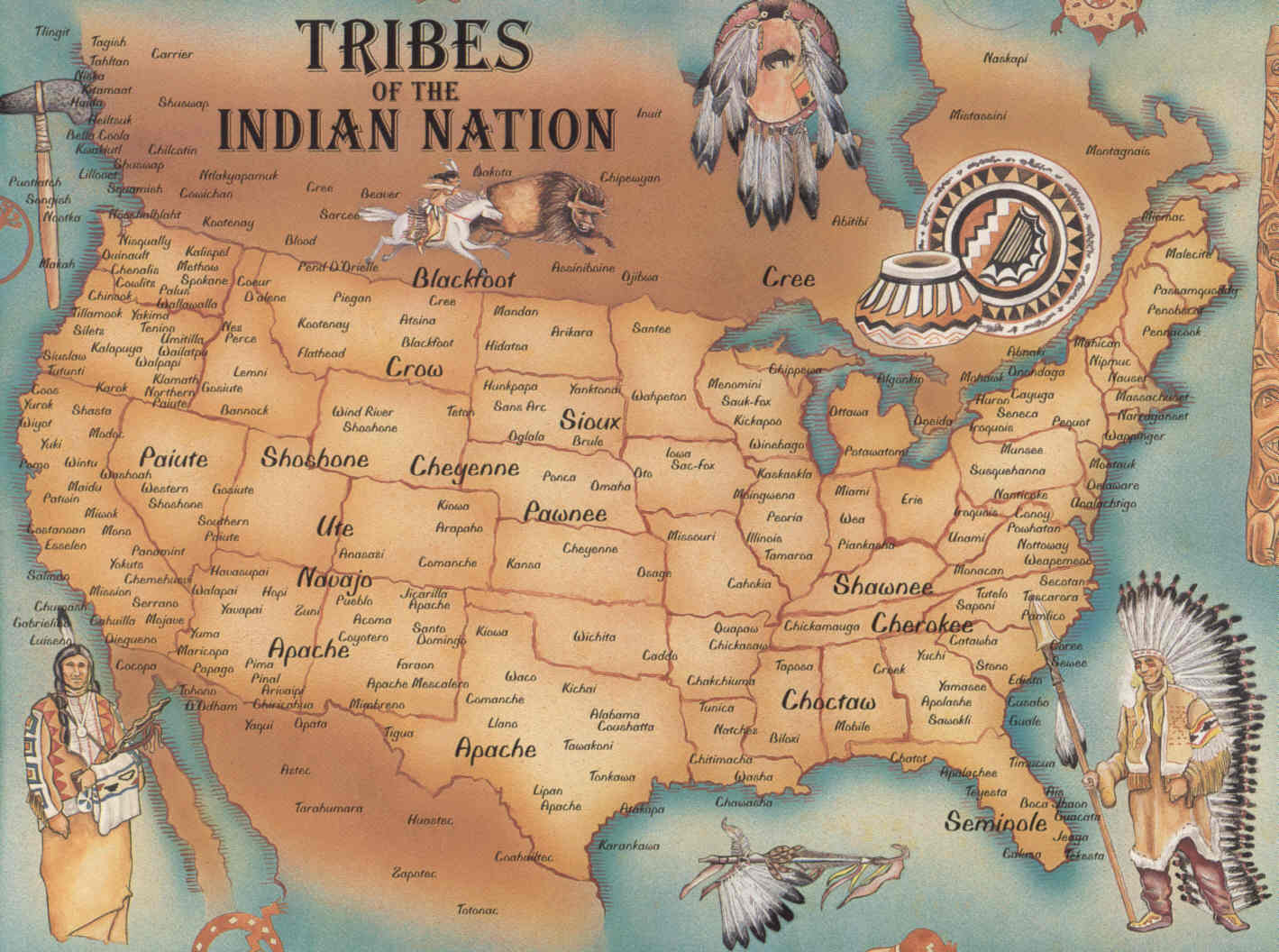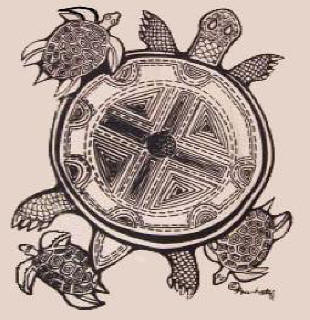|
of the American Indians
|
|
|
|
![]()
Instructor's Notes:
European explorers and settlers of America honored only one creation story, that of Genesis (and, later, Darwinian evolution), but American Indians had many creation and origin stories.
Definitions: “Creation stories, narratives, or myths” and “origin stories” are sometimes used interchangeably, but there’s a general difference:
-
Creation stories often concern the beginning and early development of the entire world or earth
-
Origin stories often concern the human origins or founding of “the people,” i.e., a given tribe or nation, or sometimes the particular creation of a natural phenomenon like thunder, the rainbow, a waterfall, or an island.
The multiplicity of American Indian origin stories derives from several converging cultural facts:
-
American Indians were not a single group of people but many different cultures and languages, each with its own stories.
-
North American Indians were “spoken or oral cultures” without writing, so their stories were not fixed—each telling might vary plot, character, and lessons
-
Indians’ tales of origins for different phenomena (crow, mountain, ocean, land) also multiplied the number
Nonetheless, two broad patterns appear throughout American Indian origin-storytelling:
-
The “Earth-Diver,” in which animals dive into the primordial ocean to bring up soil to form the land on which people will stand
-
“Emergence stories,” in which people and other animals (or animals and other people) rise from chaotic or primordial forms and “emerge” on land..
Again these patterns have many variations according to language, culture, and performance.
Another frequent motif is twins, often one good and one bad.
Because spoken texts change and absorb new materials rapidly, many American Indian stories have already been exposed to Christianity by the time they’re recorded. Any evidences of Christian influence or intertextuality in the present examples?
![]()

|
|
Online Texts for Craig White's Literature Courses
|
|




